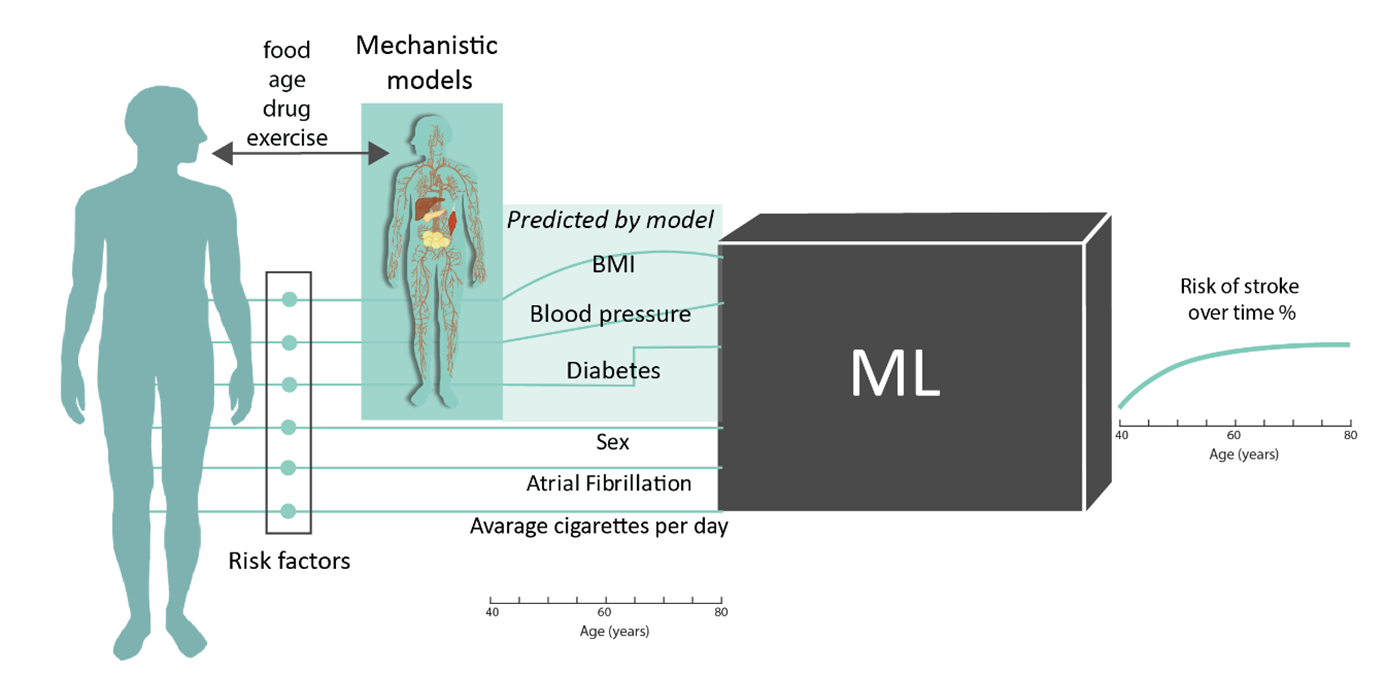Hybrid modelling and machine learning

So far, digital twins have been constructed using either mechanistic models, which can simulate the trajectory of physiological and biochemical processes in a person, or using machine learning models, which for example can be used to estimate the risk of having a stroke given a cross-section profile at a given timepoint. These two modelling approaches have complementary strengths which can be combined into a hybrid model. However, even though hybrid modelling combining mechanistic modelling and machine learning has been proposed, there are few, if any, real examples of hybrid digital twins available. We are working with developing a hybrid model for the simulation of ischemic stroke. On the mechanistic side, we combine a model for blood pressure with a multi-level (intracellular biochemistry to whole-body) and multi-timescale (seconds to years) model for the development of type 2 diabetes. This mechanistic model can simulate the evolution of known physiological risk factors through time, and under different intervention scenarios (change in diet, exercise, and certain medications). These forecast trajectories of the physiological risk factors are then used by a machine learning model to calculate the 5-year risk of stroke. The stroke risk can then be calculated for each timepoint in the simulated scenarios. We hope that our hybrid model can be used to increase doctor-patient communication, facilitate shared decision-making, and improve adherence to prescribed medications.
